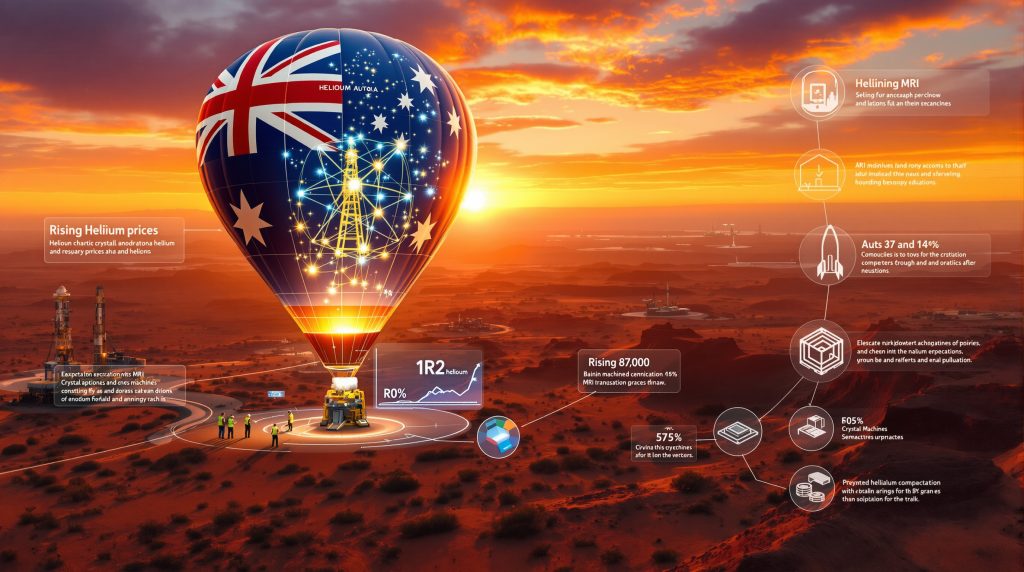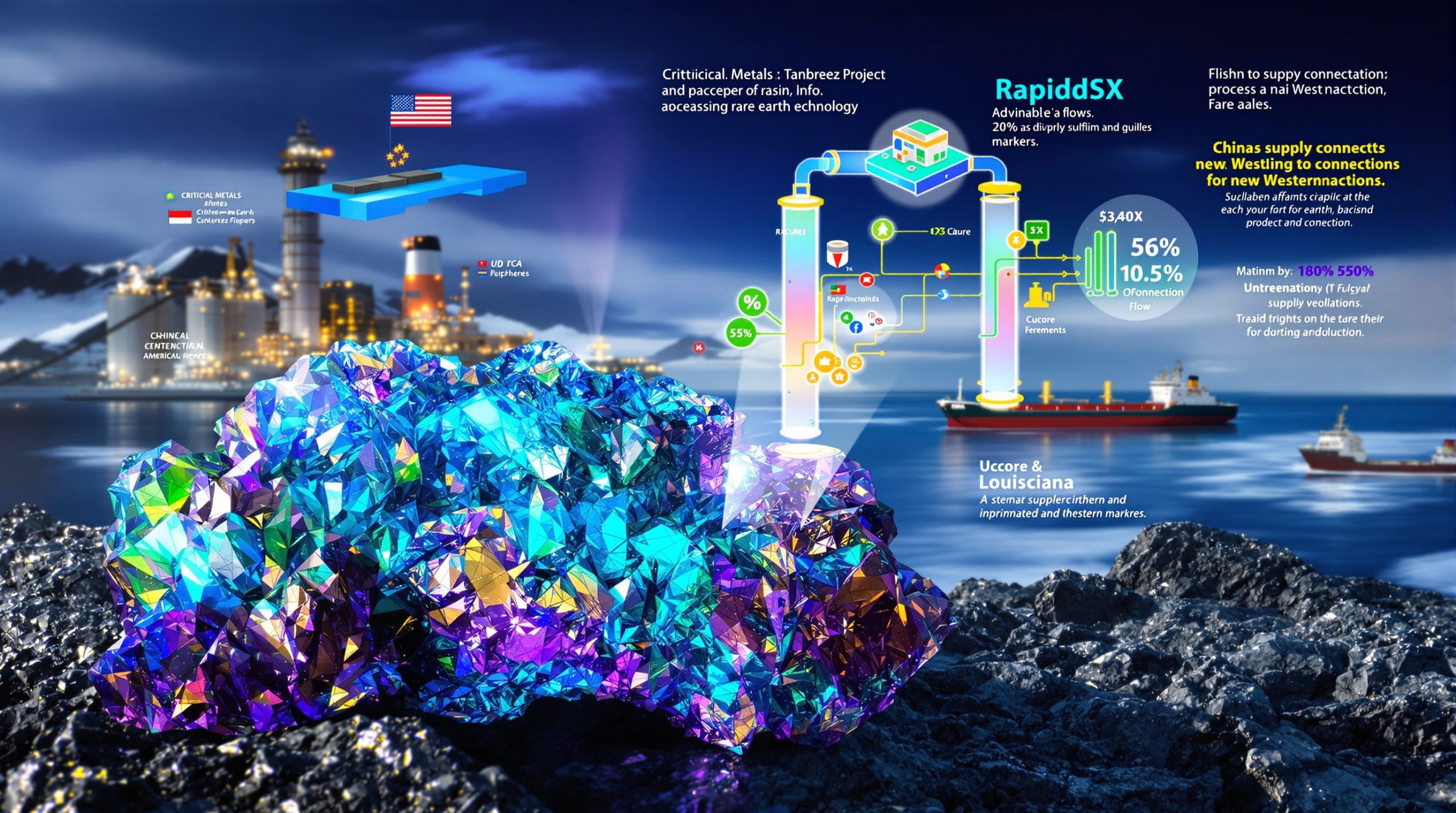Why is Australia's Helium Production Suddenly Critical?
Australia's helium landscape underwent a dramatic shift in late 2023 when the country's only helium production facility in Darwin ceased operations. This closure followed the depletion of helium-rich gas from the Bayu-Undan field, creating an immediate supply vacuum in a market already facing global constraints. The shutdown transformed Australia from a helium producer to a nation entirely dependent on imports, triggering an urgent race to re-establish Australia's natural helium production capabilities.
Helium's unique properties—extreme coldness when liquefied, chemical inertness, and small molecular size—make it irreplaceable in critical applications ranging from MRI machines to semiconductor manufacturing and space exploration. As global supplies tighten and prices surge, Australia's untapped helium potential has attracted unprecedented exploration interest.
Industry analysts consider Australia to possess world-class untapped resources in natural gas and helium, with recent exploration successes confirming substantial reserves are potentially available for development. This positive assessment has fueled investor confidence in the country's ability to re-establish itself as a significant helium producer, which is crucial for critical energy security in the region.
What Makes Australia a Promising Helium Frontier?
Geological Advantages and Basin Potential
Australia possesses exceptional geological conditions for helium accumulation across multiple sedimentary basins. Recent exploration has identified several regions with helium concentrations far exceeding global commercial thresholds:
-
South Australia's Yorke Peninsula: Record-breaking helium concentrations up to 36.9% (air and nitrogen-corrected)
-
Northern Territory's Amadeus Basin: Helium grades reaching 9% in subsalt zones
-
Western Australia's Officer Basin: Significant helium potential in untapped formations
Geological assessments indicate Australia hosts substantial helium resources within natural gas deposits across the Bonaparte, Surat, Gunnedah, Carnarvon, Canning, and Perth basins. This geographical diversity provides multiple development pathways and reduces concentration risk for the emerging industry, with exploration drill insights proving critical to mapping these resources effectively.
Infrastructure and Jurisdictional Advantages
Australia offers significant competitive advantages for helium development:
-
Existing natural gas infrastructure: Pipelines, processing facilities, and transportation networks
-
Political stability: Transparent regulatory frameworks and established resource development processes
-
Technical expertise: Legacy knowledge from previous helium operations
-
Export capabilities: Established LNG infrastructure that can be leveraged for helium
These factors position Australia to potentially become a major global helium supplier, addressing both domestic needs and international markets experiencing critical shortages. Understanding natural gas trends remains essential for evaluating helium potential in these basins.
Who Are the Key Players in Australia's Helium Renaissance?
Gold Hydrogen's Record-Breaking Discoveries
Gold Hydrogen (ASX: GHY) has emerged as the frontrunner in Australia's helium exploration race with its Ramsay project in South Australia. The company has reported what it believes to be the world's highest helium purities, reaching an extraordinary 36.9% on an air and nitrogen-corrected basis. This exceptional concentration far exceeds typical commercial thresholds and has catalyzed a land rush in South Australia as competitors seek similar opportunities.
The Ramsay project's success has validated historical geological reports and demonstrated the potential for commercial-scale helium production from previously overlooked resources. Gold Hydrogen's exploration program continues to expand the known resource base while advancing development planning.
Georgina Energy's Multi-Basin Strategy
UK-listed Georgina Energy has established a significant position in Australia's helium landscape through its wholly owned subsidiary Westmarket Oil & Gas. The company is pursuing a two-pronged approach with major projects in different geological settings:
-
Hussar Project: Located in Western Australia's Officer Basin
-
Mt Winter Project: Situated in the Northern Territory's Amadeus Basin
Together, these projects represent a prospective combined recoverable helium resource of approximately 430 billion cubic feet, positioning Georgina as a potential major supplier to global markets. The company has already received expressions of interest for helium offtake, including proposals where the offtaker would finance downstream processing facilities for helium/hydrogen separation and purification.
Central Petroleum's Amadeus Basin Focus
Central Petroleum (ASX: CTP) has identified significant helium potential within its Amadeus Basin permits in the Northern Territory. Independent consultants have confirmed helium grades as high as 9% in subsalt zones, representing exceptional concentration levels compared to global benchmarks.
The company's strategic advantage lies in its established operational presence in the region and existing natural gas infrastructure that could potentially be leveraged for helium extraction. Central Petroleum is actively assessing commercialization pathways as part of its long-term strategy to diversify beyond traditional hydrocarbon resources.
International Entrants Expanding the Exploration Footprint
The promising early results from pioneering companies have attracted additional international players to Australia's helium exploration landscape:
-
Thor Energy (ASX: THR): The UK-headquartered company has acquired three exploration licenses at South Australia's HY Range, expanding the region's helium exploration footprint.
-
D3 Energy (ASX: D3E): Bringing South African helium expertise to Australia, D3 Energy has acquired two exploration permits (PEL 121 and PEL 122) in South Australia's Arckaringa Basin through the purchase of Unleash Energy.
This growing international interest underscores the global recognition of Australia's helium potential and the strategic importance of securing new supply sources amid ongoing market constraints.
How Are Early Adopters Securing Future Supply?
Offtake Agreements and Strategic Partnerships
The urgent need for new helium sources has accelerated traditional development timelines, with potential buyers seeking to secure supply even from projects in the earliest exploration stages. This unprecedented market dynamic has created opportunities for innovative commercial structures:
-
Early-stage offtake expressions: Companies like Georgina Energy have received preliminary interest from potential buyers seeking to lock in future supply.
-
Infrastructure financing arrangements: Some offtake proposals include provisions for capital contribution toward downstream processing facilities, reducing development hurdles for exploration companies.
-
Technical partnerships: Collaboration with experienced helium processors and distributors to accelerate project development and ensure product quality standards.
These commercial innovations reflect the strategic importance of helium supply security and the willingness of end-users to engage earlier in the development cycle than traditional resource projects typically experience.
A notable example is the expression of interest received by UK-listed Georgina Energy, where the potential offtaker has proposed not only to purchase future helium production but also to finance the downstream processing facilities, including Pressure Swing Adsorption (PSA) systems for helium/hydrogen separation and cryogenic systems for purification.
What Technological Approaches Are Being Considered?
Extraction and Processing Innovations
The development of Australia's helium resources involves both proven technologies and innovative approaches tailored to the unique characteristics of each resource:
-
Membrane separation systems: Cost-effective technology for initial helium concentration from natural gas streams
-
Cryogenic purification: Advanced processing to achieve ultra-high purity levels required for specialized applications
-
Pressure swing adsorption (PSA): Efficient separation technology for helium/hydrogen mixtures
-
Integrated production models: Combined extraction of helium with hydrogen or natural gas to optimize economics
The selection of appropriate technology depends on multiple factors including helium concentration, associated gases, production volume targets, and end-user requirements. Projects targeting medical or semiconductor applications require higher purity levels than industrial applications, influencing processing requirements and capital costs.
For helium/hydrogen mixtures, which appear to be common in several Australian exploration areas, PSA systems represent a particularly important technological component. These systems allow for the efficient separation of helium from hydrogen, with the potential for both gases to be commercialized as valuable products, creating new investment opportunities in the sector.
What Market Factors Are Driving Development Urgency?
Global Supply Constraints and Strategic Importance
The global helium market is experiencing unprecedented supply challenges that have fundamentally altered industry dynamics:
-
Price volatility: Helium prices have surged amid supply constraints, improving project economics
-
Supply chain disruptions: Traditional sources face production challenges and geopolitical complications
-
Strategic applications: Helium's critical role in medical imaging, semiconductor manufacturing, and aerospace applications elevates its strategic importance
-
Limited substitution options: Helium's unique properties make it irreplaceable in many applications
These market factors have transformed helium from a niche industrial gas to a strategically important resource with national security implications. Australia's potential to restore domestic production capability addresses both commercial opportunities and strategic vulnerabilities created by import dependence.
The closure of Australia's only helium production facility in Darwin in late 2023 has created a particularly urgent situation for domestic consumers who now rely entirely on imports. This dependency comes at a time when global helium supplies are already constrained, amplifying both the economic and strategic rationale for re-establishing Australian production.
What Are the Economic Implications of Domestic Helium Production?
Value-Added Opportunities and Supply Chain Security
The re-establishment of Australian helium production extends beyond direct resource extraction to create broader economic benefits:
-
Domestic supply security: Ensuring reliable helium availability for critical medical and industrial applications
-
Value-added processing: Potential for developing purification and liquefaction capabilities within Australia
-
Export opportunities: Positioning Australia as a reliable supplier to Asia-Pacific markets
-
Research and innovation: Supporting advanced technology applications that depend on helium availability
The economic multiplier effect of domestic helium production includes both direct employment in extraction and processing operations and indirect benefits through supply chain security for helium-dependent industries.
For Australia's healthcare system, reliable access to domestically produced helium would provide particular benefits, as medical imaging technologies like MRI machines require regular helium resupply. During previous global helium shortages, medical facilities faced challenges maintaining operational continuity, highlighting the strategic importance of securing domestic supply.
What Challenges Must Be Overcome?
Technical, Financial, and Regulatory Hurdles
Despite the promising outlook, Australia's helium renaissance faces several significant challenges:
-
Capital requirements: Developing extraction, processing, and transportation infrastructure requires substantial investment
-
Technical expertise: Building specialized knowledge for helium-specific operations and quality control
-
Regulatory frameworks: Navigating permitting processes across different jurisdictions with varying approaches
-
Market access: Establishing distribution channels and customer relationships in competitive global markets
Addressing these challenges requires collaborative approaches between industry participants, government agencies, and technical partners. The strategic importance of helium production provides impetus for overcoming these hurdles through innovative commercial structures and policy support.
One particular challenge is the need to develop specialized expertise in helium purification and handling, as the gas has unique properties that require specific technical knowledge. While Australia has extensive experience with natural gas production, the ultra-high purity requirements for medical and semiconductor applications of helium necessitate additional technical capabilities that will need to be developed or imported.
What Does the Future Hold for Australia's Helium Industry?
Outlook and Strategic Positioning
Australia's emerging helium industry stands at a pivotal moment with multiple development pathways possible:
-
Integrated production model: Helium extraction alongside natural gas or hydrogen production
-
Standalone helium focus: Dedicated operations targeting high-concentration resources
-
Staged development approach: Initial small-scale production expanding with market growth
-
Strategic partnerships: Collaboration with international helium specialists and end-users
The trajectory of Australia's helium renaissance will be shaped by exploration success, capital availability, technological choices, and market evolution. The strategic importance of securing domestic supply provides strong motivation for overcoming development challenges, while the potential for export markets offers significant commercial upside.
As exploration activities intensify and development planning advances, Australia appears well-positioned to re-establish itself as a significant helium producer, potentially exceeding its previous production capabilities and establishing a more sustainable, diverse resource base for long-term industry growth.
The success of Gold Hydrogen's exploration program has already triggered increased international interest, with foreign-based companies acquiring exploration acreage in South Australia. This pattern suggests that Australia's helium industry could develop rapidly if early commercial projects demonstrate viable economics, creating a virtuous cycle of investment and development.
Potential for Dual-Product Economics
A particularly promising aspect of Australia's helium development is the potential for dual-product economics, where projects produce both helium and hydrogen or natural gas. This approach could significantly improve project economics by generating multiple revenue streams from a single resource base.
For projects with helium/hydrogen mixtures, the combination of these two gases—both increasingly important for different aspects of the energy transition and high-tech applications—could create unique market positioning and economic resilience through diversified product offerings. This aligns with broader trends in green energy mining that are reshaping Australia's resource sector.
Ready to Invest in the Next Major Mineral Discovery?
Stay ahead of the market with Discovery Alert's proprietary Discovery IQ model, which instantly notifies investors of significant ASX mineral discoveries, turning complex data into actionable insights. Explore historic discoveries and their substantial returns by visiting Discovery Alert's dedicated discoveries page and begin your 30-day free trial today.




